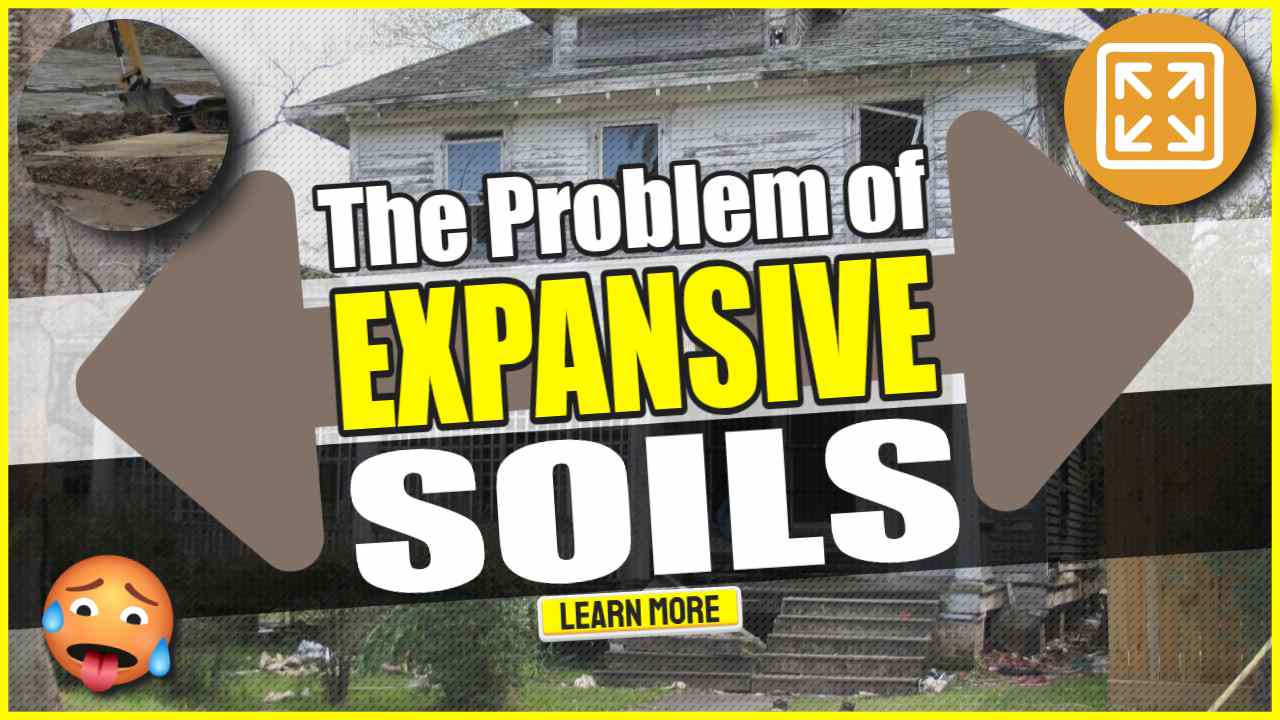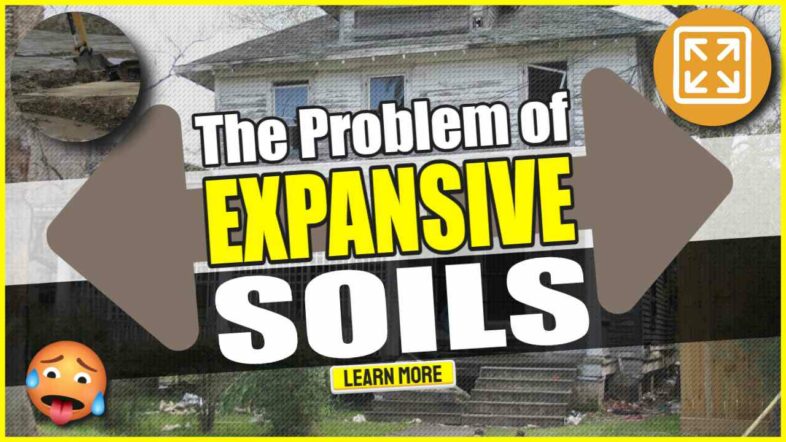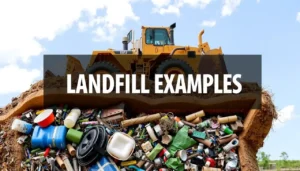The Problem of Expansive Soils: When building or buying a new house, property owners usually obsess over style, furniture, gardens, pools – but they can forget one critical factor: the soil.
Expansive soils can cause damage to buildings. Research has shown that one in four houses in the US has been somehow affected by this. What causes the expansion?
The answer lies in the content of the ground.
Moisture and minerals are the main culprits for the swelling of the ground. More specifically, clay minerals are responsible for the changes. Read more about it here.
Simply put, they're able to swell and shrink, depending on the amount of water they absorb. If they're wet, they get bigger; in dry conditions, their size is reduced. This unevenness leads to pressure in the ground, creating significant risk for buildings. As a matter of fact, property owners pay more for damages caused by expansive soil than by natural disasters.
Shrink-Swell Potential
This ability of the ground to expand and contract is known as shrink-swell potential. In simple terms, the fine-grained clay in the soil, which usually constitutes one-third or more, does the expanding. This can create problems during engineering.
If the sub-base is expansive, it's more than necessary to modify the soil so that it will become more stable. This, of course, reduces the potential for shrinking and swelling, increasing the longevity of the base. If the soil is left untouched, the buildings could be in danger in the near future.
Expansive soils are widespread around the globe, and a great number of buildings are at risk. Before starting projects such as pavements, pipelines, apartment buildings, etc., examining the soil is a clear must. The amount of risk is directly related to the size of the building.
Houses, for instance, weigh a lot less than skyscrapers. This means they're unable to influence the movement of the soil, while tall buildings suppress the ground more effectively.
These soils can be found throughout the United States. They're more prevalent in some regions and more scarce than others.
For that reason, engineers have to research the building area thoroughly before they start building. That's the only way to make sure that the ground is stable enough.

CC BY-NC-ND by big/sara
How to Recognize Expansion
The most common tell-tale signs for ground shifts are cracks. These deep and wide openings in the soil are a result of prolonged expansion and contraction. They're visible on concrete and asphalt roads, driveways and other man-made surfaces.
Visit: https://www.sciencedirect.com/topics/engineering/expansive-soil for more information.
We'll all seen cracks in the walls, ceiling, or floors of houses. This happens when they are built on expansive soils that haven't been modified and reinforced. With time, all the swelling and shrinking causes the building to move.
Windows and doors are also potential targets. If your property was built on moveable soil, you might notice that windows shut down harder than when the house was new. Even the roof can become uneven after a while.
One sure way to check the ground and the clay content is laboratory testing.
As we said, the more clay is involved, the greater the risk for expansion.
This is not the only factor: density and water content are essential, too, as well as particle size analysis.
By considering all these factors, engineers can assess whether the soil is suitable for building or not.
Remedies
Avoiding expansive soil at all costs is impossible. If people were doing it, large areas of land would remain uninhabited throughout the US. That doesn't mean we can't improve the situation. So-called “cut and fill” operations are very effective, but they are pricey.
There are some less expensive but successful methods, such as foundation reinforcements. Specific reagents such as lime can influence these troublesome clay portions and stabilize the soil. People install different devices to regulate water penetration, like gutters, drains, waterproof barriers, etc.
Taking care of buildings is a continuous process. After the object is finished, homeowners should protect the soil near the foundation from excessive water. You can also prevent soil expansion by making sure the drainage is directed away from the buildings. Deliberate watering should be restricted to a degree.
It's advisable to inspect regions where heavy rains are frequent. This means checking for ponding areas around the buildings, which can add excessive moisture to the ground if there's too much water. You should also check swimming pools regularly for possible leaks from so-called pressurized water lines.
Consequences from expansive grounds are not visible immediately. It could take years before you notice those tiny, annoying cracks along the walls of your house. That doesn't mean your home will collapse and vanish right away, but it helps to know that you can avoid the issue. By hiring professional engineers and builders who know their business, you make sure that your residence will be stable for years to come.
Landfill Examples – Designs and Operation
Modern sanitary landfills integrate engineered systems for environmental protection, while bioreactor landfills boost waste decomposition for energy. Specialized secure landfills use double-liner systems for safety. Effective landfill designs maximise capacity via strategic materials and techniques, with advanced monitoring technologies ensuring compliance and sustainability. Discover fascinating landfill examples…
Small-Scale Separators for Dairy Farms and AD Plants
New Small-Scale Separator is Big on Results Following the success of its acclaimed Separators since their launch in 2016, Borger has released a new, affordable, 25 m³/h model, suitable for dairy farmers with herds of up to 150 – and for small-scale biogas operators. The launch of this compact new Bioselect RC 25 Small-Scale Slurry Separators (which […]
The Skip Hire Operator's Duty of Care (UK) – Updated Legal Framework
Skip Hire operator's Duty of Care (UK) requirements for Skip Hire Service Companies are poorly understood by the public and even by some skip hire companies and other waste transport operators. Why the UK's Duty of Care Regulations Were Introduced for the Transport Sector Most nations suffer fly-tipping problems and the UK response has been […]
List of Old Landfill Sites Going Solar – Solar Landfills
Many old landfill sites are going solar so we thought we would create a list of 10 recent examples of landfill sites going solar, which have in the News, over the past 6 months. They are being made into what we call “Solar Landfills”, and its great news for the environment because solar energy is […]










